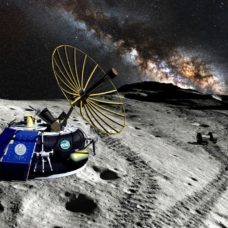A new study published in the journal Nature Geoscience reveals that the Moon is shrinking. The finding was reportedly based on the analysis of images captured by NASA’s Lunar Reconnaissance Orbiter since 2009.
According to a survey of over 12 thousand images taken by LRO of the Moon, one of its largest lunar basins located near its north pole known as the Mare Frigoris, has continuously been cracking and shifting.
The Moon’s structure is nothing like Earth. Its tectonic activity depends on the heat it lost since its formation around 4.5 billion years ago. This phenomenon, in turn, causes the lunar satellite’s surface to wrinkle.
Experts reported that since the Moon’s crust is so brittle, the shrinking of its interior contributes to the breaking of its surface, which forms thrust faults. Thrust faults are sections of the crust that have been pushed up over their adjacent areas.
The Moon is Shrinking
Back in 1972, Apollo 17 astronauts Eugene Cernan and Harrison Schmitt ascended to one of the Moon’s cliffs called the Lee-Lincoln fault scarp as part of their mission to measure the seismic activities of our lunar neighbor.
Since then, scientists claimed that our planet’s natural satellite had become 50 meters skinnier, proof that the Moon is shrinking. Nicholas Schmerr, a co-author of the study from the University of Maryland, said:
“This is exciting as it wasn’t clear if the moon had already gone through this period billions of years ago and was tectonically dead, or if it was still active in the present.”
The data gathered from the Apollo 11, 12, 14, 15, and 16 missions showed that there had been 28 moonquakes between 1969 and 1977. The researchers compared the epicenters of the said quakes with the Moon’s faults images captured by NASA’s orbiter.
The comparison revealed that around eight of the moonquakes occurred due to the activity along the faults. Meaning, the Apollo seismometers were recording the actual shrinking of the Moon.
John Keller, another author of the study and the project scientist of the Lunar Reconnaissance Orbiter mission, said in a statement:
“It’s really remarkable to see how data from nearly 50 years ago and from the [orbiter] mission has been combined to advance our understanding of the Moon while suggesting where future missions intent on studying the Moon’s interior processes should go.”



















Comments (0)
Most Recent